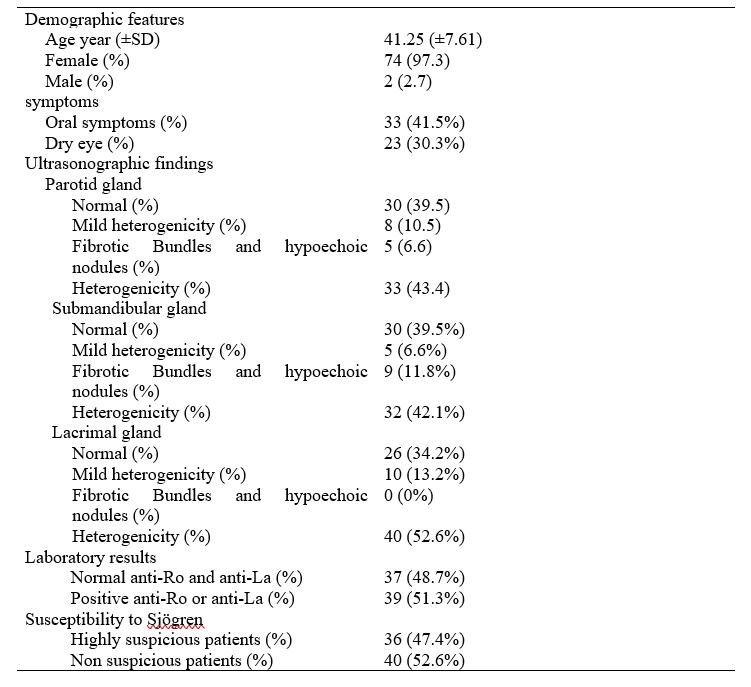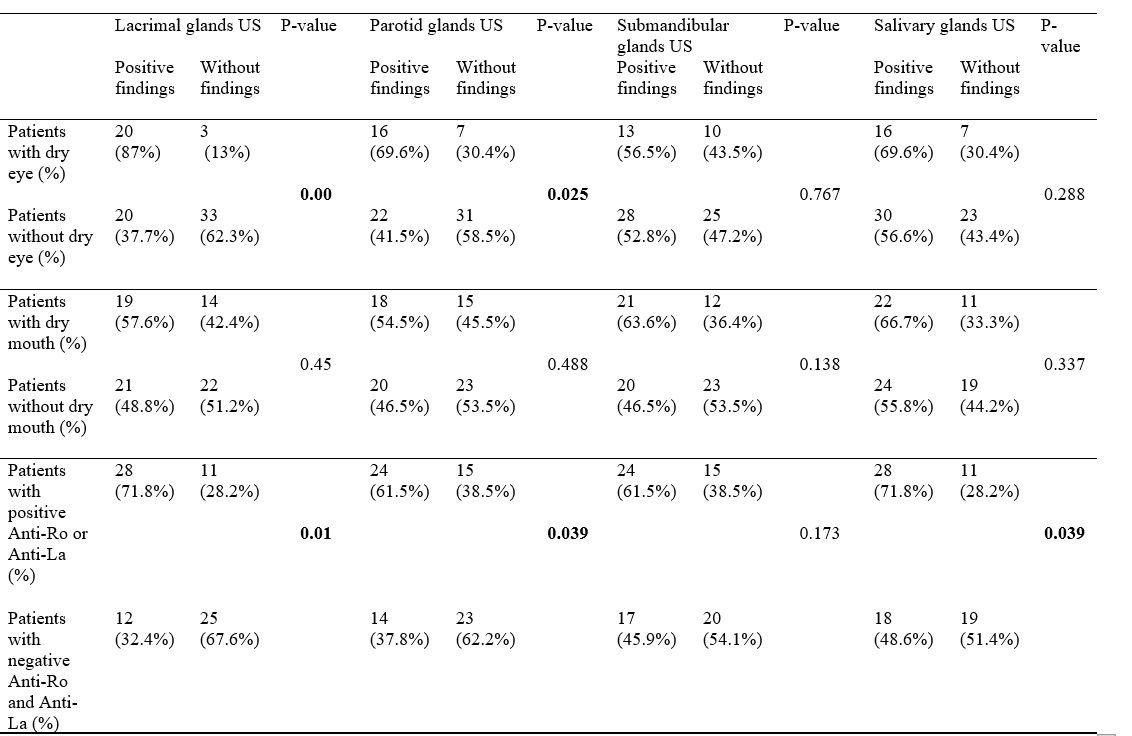Session Information
Session Type: Poster Session C
Session Time: 10:30AM-12:30PM
Background/Purpose: Systemic Lupus Erythematosus (SLE) is an autoimmune inflammatory condition that can manifest in various ways, such as oral and eye-related symptoms, which may overlap with secondary Sjögren’s (sS). The objective of this research is to assess the ultrasound findings of lacrimal and salivary glands in patients with SLE and their association with relevant clinical and laboratory findings.
Methods: The study consisted of 76 patients with systemic lupus erythematosus, conducted in a cross-sectional manner. Ultrasound imaging of the lacrimal, submandibular, and parotid glands was conducted for every patient, with demographic characteristics, lab results, and clinical symptoms obtained from their medical records.
Results: Out of the 76 participants, 33 (41.5%) showed one or more oral symptoms linked to sS, while 23 (30.3%) reported experiencing dry eye. Half of the participants exhibited ultrasonographic abnormalities in salivary glands, while 52.6% showed heterogeneity in lacrimal glands. A significant correlation was found between dry eye symptoms and positive anti-Ro/SSA and anti-La/SSB serology and abnormal lacrimal/parotid ultrasound( P-value 0.036, 0.00 and 0.025 respectively). Notably, 88.9% of patients with a high suspicion of SS based on subjective symptoms and serology displayed abnormal ultrasonographic findings, suggesting the potential of SGUS and LGUS in early detection of secondary SS.
Conclusion: SGUS and LGUS are promising non-invasive modalities for the early detection of secondary SS in SLE patients. Their integration into routine clinical practice could facilitate timely diagnosis and intervention, potentially improving patient outcomes and quality of life.
To cite this abstract in AMA style:
Damirchi M, Abdolahi N, Hosseini F, Mohammadi M, Khosravi M, Niakan Z, Abbasi S. Salivary and Lacrimal Glands Ultrasonography in Systemic Lupus Erythematosus Patients [abstract]. Arthritis Rheumatol. 2024; 76 (suppl 9). https://acrabstracts.org/abstract/salivary-and-lacrimal-glands-ultrasonography-in-systemic-lupus-erythematosus-patients/. Accessed .« Back to ACR Convergence 2024
ACR Meeting Abstracts - https://acrabstracts.org/abstract/salivary-and-lacrimal-glands-ultrasonography-in-systemic-lupus-erythematosus-patients/


